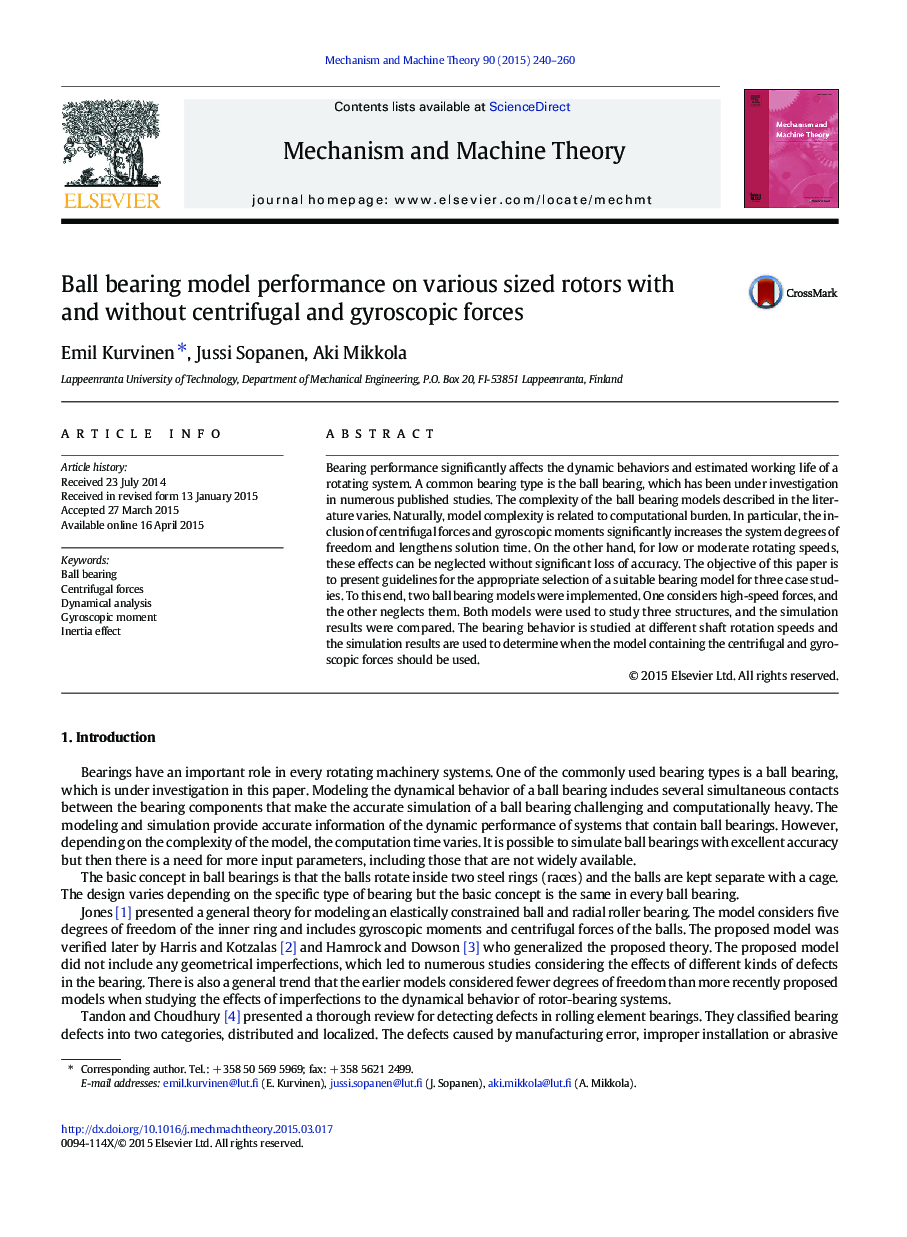| Article ID | Journal | Published Year | Pages | File Type |
|---|---|---|---|---|
| 802145 | Mechanism and Machine Theory | 2015 | 21 Pages |
•Two ball bearing simulation models are introduced and compared against each other.•Bearing models are used to analyze the dynamic performance of three different sized rotorbearing systems.•The results are used to determine when the centrifugal and gyroscopic forces should be included to the bearing model.•The limiting rotation speeds are found in the studied cases.
Bearing performance significantly affects the dynamic behaviors and estimated working life of a rotating system. A common bearing type is the ball bearing, which has been under investigation in numerous published studies. The complexity of the ball bearing models described in the literature varies. Naturally, model complexity is related to computational burden. In particular, the inclusion of centrifugal forces and gyroscopic moments significantly increases the system degrees of freedom and lengthens solution time. On the other hand, for low or moderate rotating speeds, these effects can be neglected without significant loss of accuracy. The objective of this paper is to present guidelines for the appropriate selection of a suitable bearing model for three case studies. To this end, two ball bearing models were implemented. One considers high-speed forces, and the other neglects them. Both models were used to study three structures, and the simulation results were compared. The bearing behavior is studied at different shaft rotation speeds and the simulation results are used to determine when the model containing the centrifugal and gyroscopic forces should be used.
